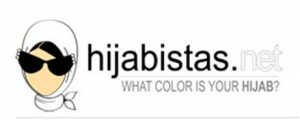-
The rise and rise of the Muslim fashion industry (part 1)
Last year I wrote for the FT about the growth of Muslim fashion, which is spanning the globe from Indonesia to California. In a marketplace that is growing so rapidly and in which countries, designers and trends are developing faster than you can say ‘hijab couture’, in this post I’ll be looking at some of the latest developments in the industry.
Note: part 2 of this post has now been published and you can read it here.
In mid August, Jakarta was home to Indonesia’s 3rd Islamic Fashion Fair which is held by the Indonesia Islamic Fashion Consortium with “146 booths offering the latest trends in Indonesian Muslim fashion, shoes, bags and accessories.”
Indonesia’s Industry Ministry is eyeing Europe as its key future export destination, and wants to be an industry hub by 2020. According to the Ministry, annual sales of Muslim clothing in Europe have now reached US$ 1.5 billion. There are also plans afoot for Indonesia and Thailand to team up to market Indonesian products in Europe taking advantage of Thailand’s easy access to the region.
As part of the plan to turn the country into a global fashion Mecca, the Tourism and Creative Economy Ministry will send six Indonesian designers to the 2012 International Fair of the Muslim World in Paris in November.
But there are challenges of design, production and consistency that have to be addressed by the country’s fashion industry.
The Olympics have just passed and a number of Muslim women, including those observing modest dress, from all over the world have taken part, and include several medallists. It’s no surprise then that Muslim-friendly sportswear continues to grow in popularity. First up are sports-friendly headscarves like Capsters. This brand offers ranges for ‘sports’, ‘watersports’, ‘casual’ and even ‘exclusive’. There’s also Friniggi, based out of Botswana, which describes itself as: “Performance sportswear that covers your body and gives you the freedom to reach your fitness goals.” ResportOn uses playful wording to capture the idea that clothes might cover the body, but free the participant to partake in the sport of their choice: “Sports headscarf. Be yourself. Unveil your performance.”
An American Muslim designer aiming to bring her faith to the catwalk was showcased as part of New York Fashion Week in 2011. Earlier this year she established a Muslim modelling agency called Under Wraps.
She says: “As a Muslim woman who has also worked in the fashion industry, I observe a heavy Muslim influence in all areas of fashion. Designers, photography, editorials all displaying inspirations from Muslim fashion. I feel there is a need to shine the light on Muslim women who have been some of the originators of trend setting modest fashion for years. I’m bringing Muslims to mainstream – covered is the new couture.” As proof, she showcases fashion mag editorials that already have a Muslim influence.
Of course this created a debate in Muslim and wider circles on a question discussed here by Fashionista.com: “Can modesty and modeling mix?” But it’s a pertinent development, particularly when considering the rise of the Muslim fashion magazines which we’ve tweeted about regularly, like Aquila Style, Ala andModestyle.
 Muslim fashion blogging also continues to grow. Hijabistas lists clothing, designers and fashion events and cheekily asks “what colour is your hijab?”. It also showcases “hijabistas from around the world.”
Muslim fashion blogging also continues to grow. Hijabistas lists clothing, designers and fashion events and cheekily asks “what colour is your hijab?”. It also showcases “hijabistas from around the world.”Hijabtrendz continues its popularity, billing itself as the “Original Fashion, Beauty
 and Entertainment Blog for Muslim Women” and showcasing the charmingly titled “Pop culture hijabi” column.
and Entertainment Blog for Muslim Women” and showcasing the charmingly titled “Pop culture hijabi” column.US-based Haute Hijab describes its philosophy in words which will resonate with Muslim Futurists who combine faith with modernity, explaining they believe “in an individual’s personal expression of faith and modesty through dress.”
More trends next week!
